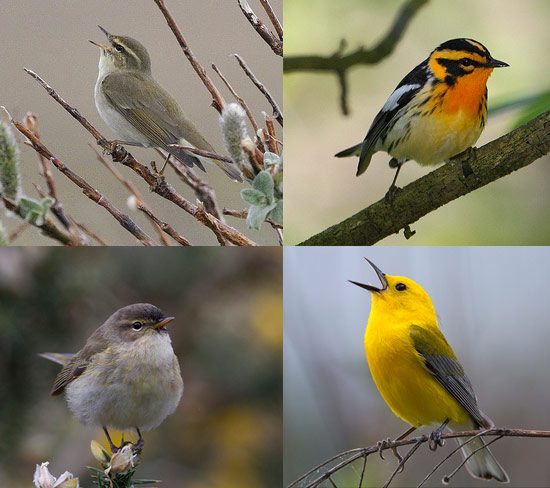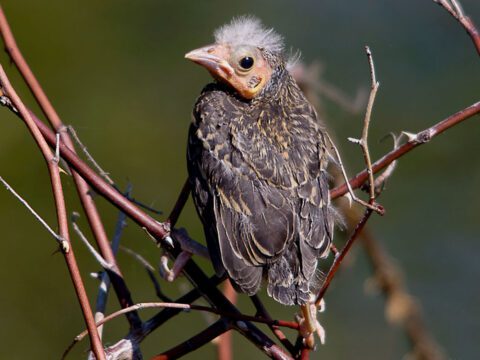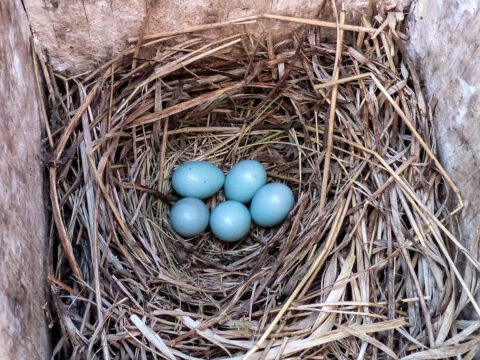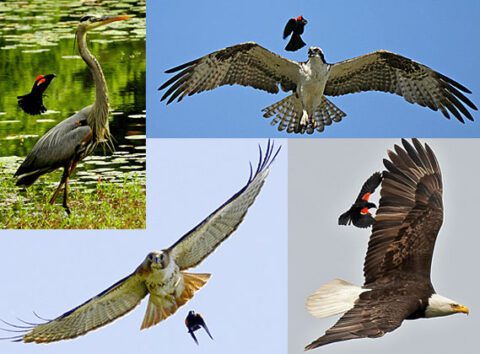Who’s got the best warblers (and why?): Europe vs. America edition
By Gustave Axelson June 29, 2012
I suppose one could say that brownish European warblers are no different than our sparrows—differentiating a Savannah from a Song from a Lincoln’s sparrow can be tricky if you rely on field marks alone. But c’mon, these are WARBLERS. Some of the most cheery, dazzling, brilliant participants in spring’s migratory parade!
Europeans have a different opinion. Dale Forbes, an Austrian, argued on 10,000 Birds last year that “real” warblers are brown, and our warblers are little more than “silly canaries.” (Although it took only one wood-warbler extravaganza at Magee Marsh this past May for Dale to reconsider his position).
Personal opinions aside, there’s an interesting evolutionary question here. Warblers on either side of the Atlantic aren’t making a fashion choice in their plumage (“Should I wear yellow or brown before Memorial Day?”). Is there some kind of competitive advantage for warblers being brown in Europe and colorful in North America? I posed that question to Irby Lovette, director of the Fuller Evolutionary Biology program here at the Cornell Lab (and leader of a project that mapped the wood-warbler tree of life).
Irby quickly pointed out that though both groups are called “warblers,” they’re not particularly closely related—so you wouldn’t necessarily expect them to sport similar plumages. Europe’s warblers are all in a superfamily, Sylvoidea, while North America’s all belong to the family Parulidae. That’s why your field guide places the few Old World warblers that show up in North America (like the Arctic Warbler) near the kinglets, and far removed from “our” warblers.
Taxonomic worries aside, Irby was still willing to offer an explanation:
“So scientifically we have to just consider why some birds are drab and others are brightly colored. The reason our wood-warblers are more colorful has to do with various forms of sexual selection. Our male warblers use their bright plumage as symbols of status. Consider the American Redstart. First-year males are more drab, but adult males are brightly colored, and they get the best territories. Colorful male plumage is also beneficial in attracting females. And when you look at our female warblers, they tend to be more drab.
“So, why are European warblers drab? Well, they accomplish the same thing, males compete with other males and attract females, but they do it through their songs instead. They tend to be prolific songsters. So European warblers just chose a different type of communication.”
(And indeed, the Euro birders on the trip bragged their warblers were superior singers.)
Even though I prefer my warblers to be bright and cheery, I will concede that the subtleties of European warblers necessitates better technical ID skills. On my Hungary trip, the British contingent of birders were adept at using setting, posture, behavior, and song in identifying birds, and they relied on field marks only as supporting evidence. That’s also the gist of our Inside Birding video tutorials, in case you’re interested in brushing up on your own skills.
For me, one final anecdote from the trip sums up the debate. After birding in Hungary’s Bükk National Park one day (where I racked up Eurasian Treecreeper, Marsh Tit, Rock Bunting, and Hawfinch), I sat down for a cold Soprani beer with the European birders. A Swede named Per Göran Bentz told me he had a photo of his favorite warbler on his credit card. He opened up his wallet, took out the card, and showed me a striking image of a Blackburnian Warbler.
- Do you agree or disagree? Read the second post in this series: Counterpoint: 7 Ways European Warblers Outperform American Warblers

All About Birds
is a free resource
Available for everyone,
funded by donors like you
American Kestrel by Blair Dudeck / Macaulay Library




